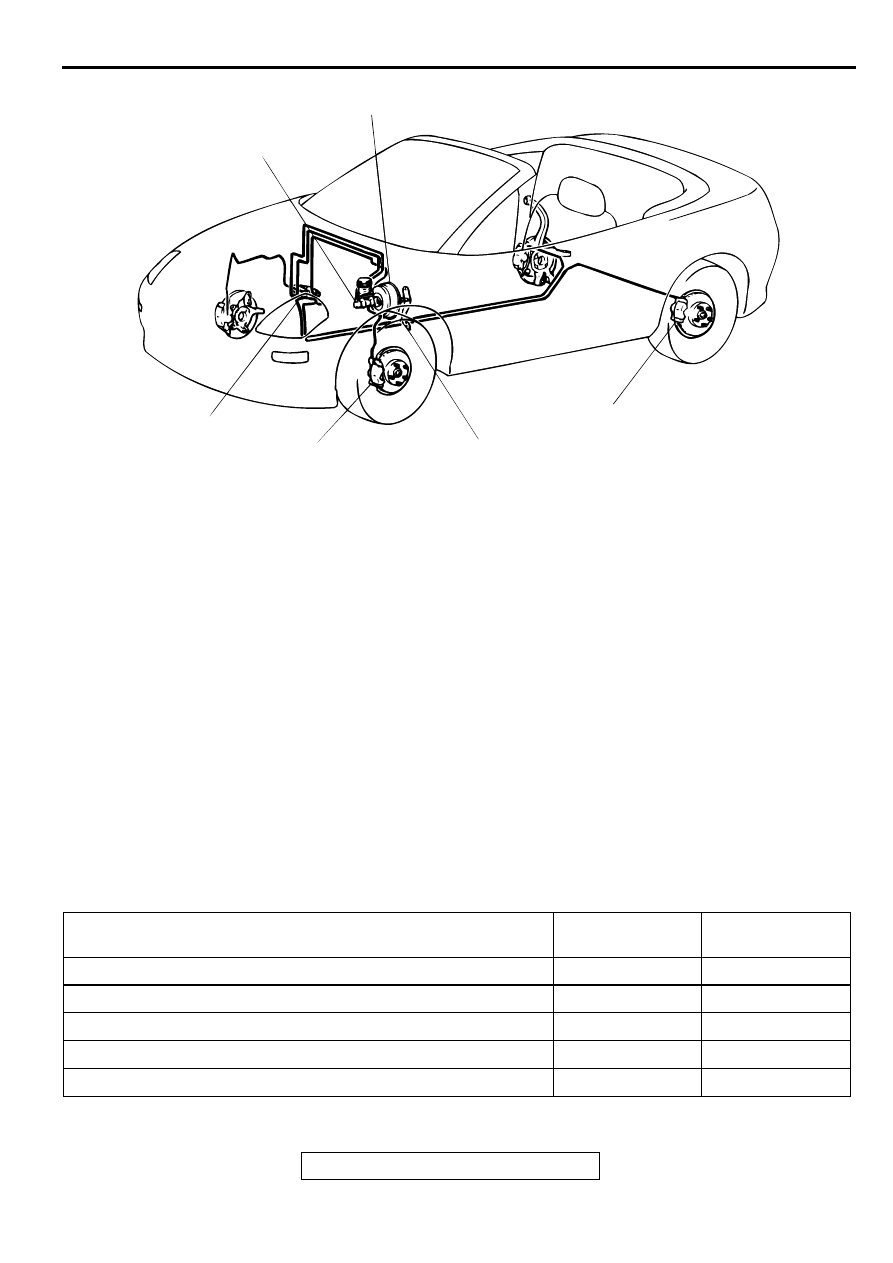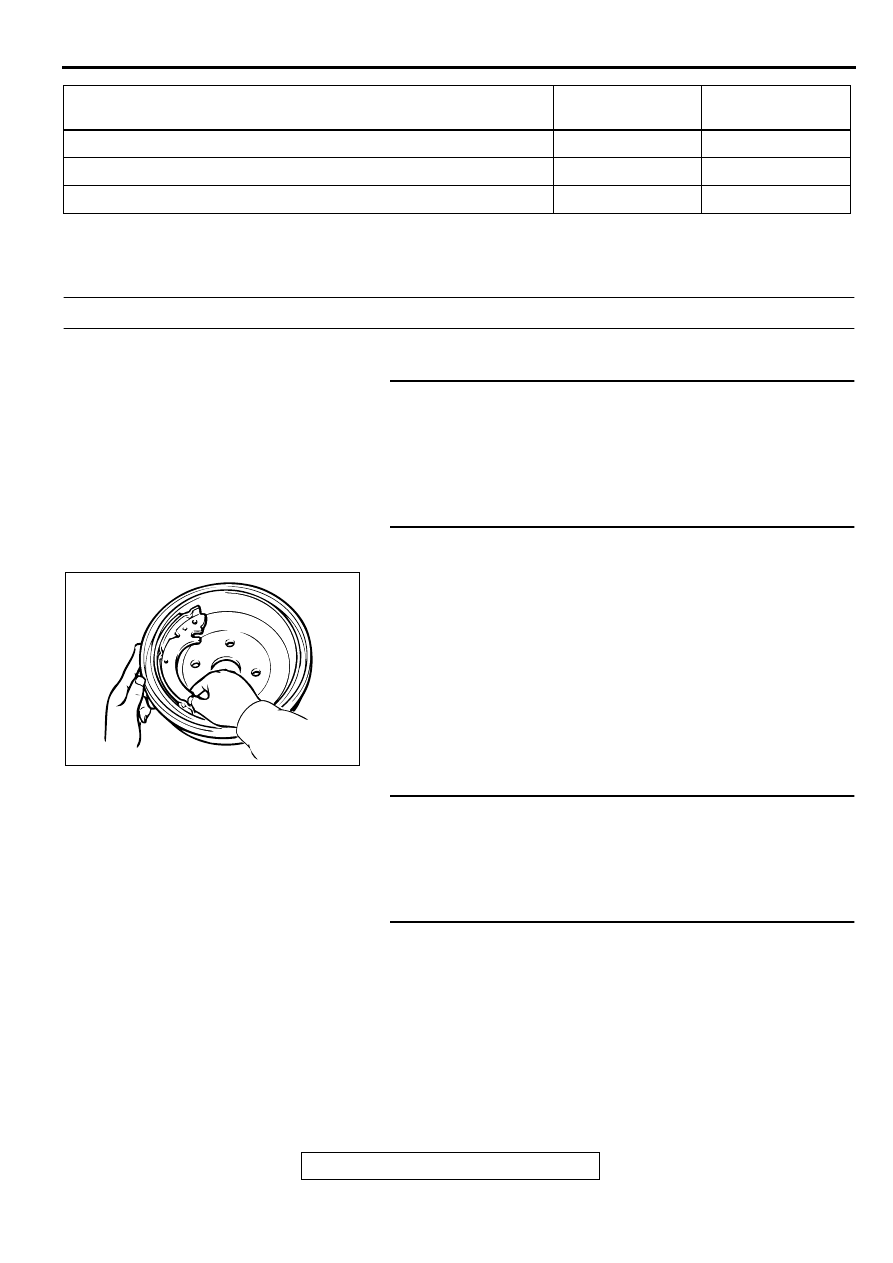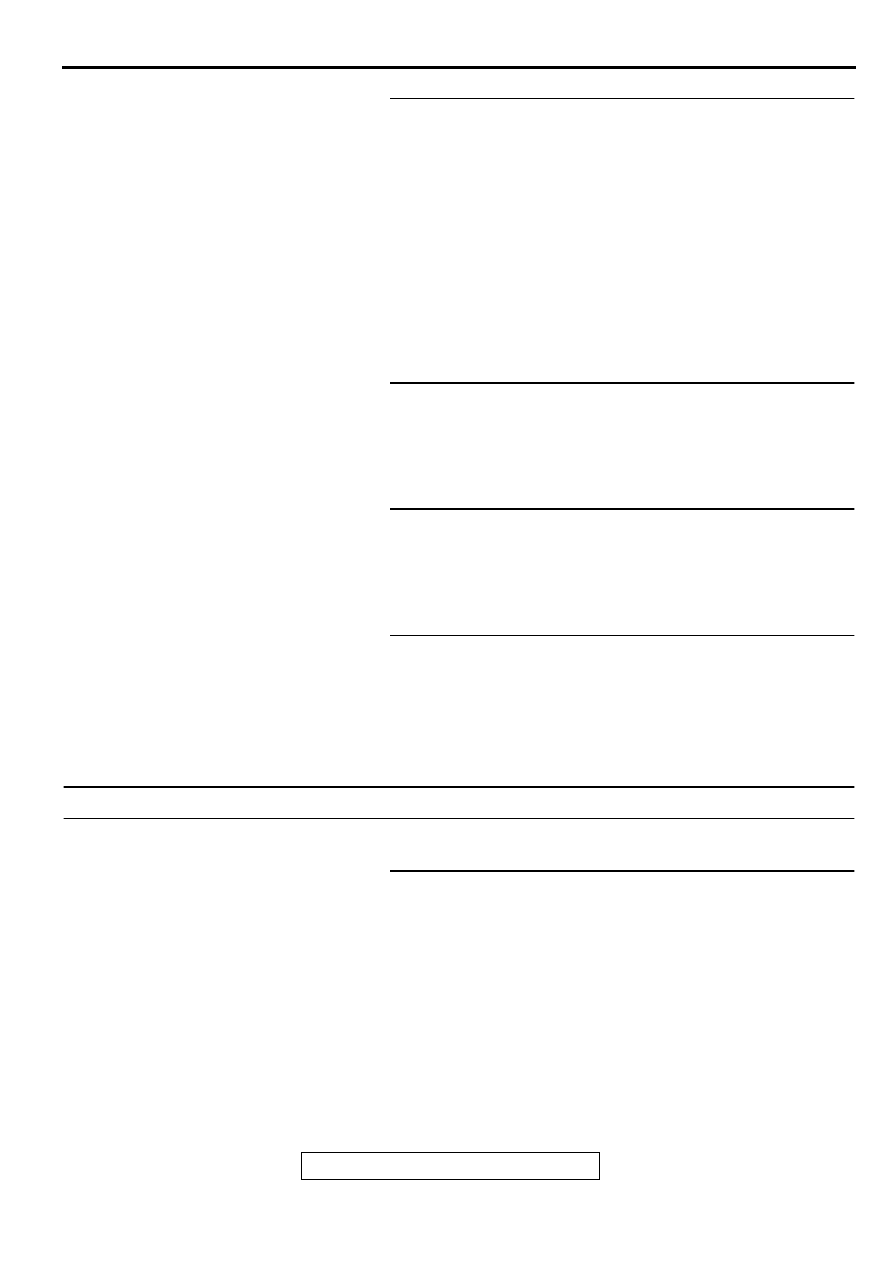Mitsubishi Eclipse / Eclipse Spyder (2000-2002). Service and repair manual — part 564

BASIC BRAKE SYSTEM DIAGNOSIS
TSB Revision
BASIC BRAKE SYSTEM
35A-5
B A SIC B R A K E SYSTEM D IA G N O SIS
INTRODUCTION TO BASIC BRAKE SYSTEM DIAGNOSIS
M1351009700085
Hydraulic brakes configured of the brake pedal,
master cylinder, brake booster and drum or disc
brakes, are incorporated. Malfunctions such as
insufficient braking power or the generation of noise
may occur due to wear, damage or incorrect
adjustment of these parts.
BASIC BRAKE SYSTEM DIAGNOSTIC TROUBLESHOOTING STRATEGY
M1351009800082
Use these steps to plan your diagnostic strategy. If
you follow them carefully, you will be sure that you
have exhausted most of the possible ways to find a
basic brake system fault.
1. Gather information from the customer.
2. Verify that the condition described by the
customer exists.
3. Find the malfunction by following the symptom
chart.
4. Verify malfunction is eliminated.
SYMPTOM CHART
M1351009900090
AC004196 AB
BRAKE BOOSTER
MASTER CYLINDER
PROPORTIONING VALVE
FRONT BRAKE
BRAKE PEDAL
REAR BRAKE
<ECLIPSE SPYDER>
SYMPTOMS
INSPECTION
PROCEDURE
REFERENCE
PAGE
Vehicle pulls to one side when brakes are applied
1
Insufficient braking power
2
Increased pedal stroke (Reduced pedal-to-floor board clearance)
3
Brake drag
4
Scraping or grinding noise when brake are applied
5

BASIC BRAKE SYSTEM DIAGNOSIS
TSB Revision
BASIC BRAKE SYSTEM
35A-6
SYMPTOM PROCEDURES
INSPECTIONPROCEDURE 1: Vehicle Pulls to One Side when Brakes are Applied
DIAGNOSIS
STEP 1. Check for oil, water, etc., on the pad or lining
contact surface of all brakes.
Q: Is oil, water, etc., on the pad or lining contact surface?
YES : Replace the part and determine and repair source/
cause of foreign material. Then go to Step 8.
NO : Go to Step 2.
STEP 2. Check the lining and brake drum contact.
<Vehicles equipped with rear drum brake>
(1) If equipped with rear disc brake, go to Step 5.
(2) Put chalk on the inner surface of the brake drum. Rub the
lining against the drum inner surface.
NOTE: Clean off chalk after check.
Q: Does the lining wipe off or smudge the chalk across the
full width of the lining?
YES : Go to Step 3.
NO : Replace the shoe and lining assemblies on both
sides. Then go to Step 4.
STEP 3. Check the auto adjuster function (Refer to
.).
Q: Is there fault?
YES : Repair it. Then go to step 8.
NO : Go to Step 4.
STEP 4. Check the brake drum inside diameter (Refer to
.).
Q: Is the brake drum inside diameter outside of
specifications?
YES : Replace the part. Then go to Step 8.
NO : Go to Step 5.
Squealing, groaning or chattering noise when brake are applied
6
Squealing noise when brakes are not applied
7
Groaning, clicking or rattling noise when brakes are not applied
8
SYMPTOMS
INSPECTION
PROCEDURE
REFERENCE
PAGE
AC000856

BASIC BRAKE SYSTEM DIAGNOSIS
TSB Revision
BASIC BRAKE SYSTEM
35A-7
STEP 5. Check disc brake pistons for smooth operation.
(1) With engine not running, depress the brake pedal rapidly
several times to deplete booster vacuum reserves.
(2) Test each disc brake assembly one at a time.
a. Remove the lower caliper bolt, then remove caliper from
mount.
b. Have an assistant slowly depress the brake pedal.
Confirm piston(s) extend slowly and smoothly with no
jumpiness. Repeat for each disc brake assembly.
Q: Do (does) the piston(s) move correctly?
YES : Go to Step 6.
NO : Disassemble and inspect brake assembly (Refer to
and/or
STEP 6. Check brake disc(s) for run out (Refer to
or
.).
Q: Is runout outside of specifications?
YES : Repair and replace as necessary. Then go to Step 8.
NO : Go to Step 7.
STEP 7. Check brake discs for correct thickness (Refer to
.).
Q: Is the thickness outside of specifications?
YES : Repair or replace as necessary. Then go to Step 8.
NO : Go to Step 8.
STEP 8. Check symptoms.
Q: Is the symptom eliminated?
YES : Repair complete.
NO : Start over at Step 1. If a new symptom appears, refer
to the symptom chart.
INSPECTION PROCEDURE 2: Insufficient Braking Power
DIAGNOSIS
STEP 1. Check whether the brake fluid is low, is the correct
fluid (A/T fluid, engine oil, etc.) or is contaminated (debris,
sand, etc.).
Q: Is there fault?
YES : Refill or replace with the specified brake fluid DOT 3
or DOT 4. Bleed the brakes if necessary (Refer to
NO : Go to Step 2.

BASIC BRAKE SYSTEM DIAGNOSIS
TSB Revision
BASIC BRAKE SYSTEM
35A-8
STEP 2. Check for spongy (not firm brakes).
(1) With engine not running, depress the brake pedal rapidly
several times to deplete booster vacuum reserve.
(2) With the brake pedal fully released, depress the brake
pedal slowly until it stops.
(3) With a measuring stick (ruler, etc.) next to the brake pedal,
depress the pedal firmly and measure the distance the
pedal traveled.
Q: Is the distance greater than 20 mm (0.8 inch)?
YES : Bleed the brakes to remove air in the fluid (Refer to
NO : Go to Step 3.
STEP 3. Check the lining and brake drum contact.
<Vehicles equipped with rear drum brake>
(1) If equipped with rear disc brake, go to Step 5.
(2) Put chalk on the inner surface of the brake drum. Rub the
lining against the drum inner surface.
NOTE: Clean off chalk after check.
Q: Does the lining wipe off or smudge the chalk across the
full width of the lining?
YES : Go to Step 5.
NO : Replace the shoe and lining assemblies on both
sides. Go to Step 9.
STEP 4. Check the auto adjuster function. <Vehicles
equipped with rear drum brake>
Refer to
.
Q: Is there fault?
YES : Repair it. Then go to Step 9.
NO : Go to Step 5.
STEP 5. Check the brake booster function.
Refer to
.
Q: Is there fault?
YES : Replace the part. Then go to Step 9.
NO : Go to Step 6.
STEP 6. Check for pinched or restricted brake tube or
hose.
Q: Is there pinched or restricted brake tube or hose?
YES : Replace that complete section of brake tube or brake
hose. Then go to Step 9.
NO : Go to Step 7.
AC000856

Нет комментариевНе стесняйтесь поделиться с нами вашим ценным мнением.
Текст